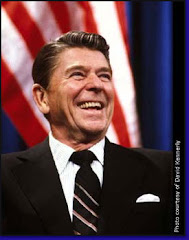#2 in one-armed bandits!
Oklahoma has a slot machine for every seventy-nine residents. The Sooner state has over 45,000 slot machines in the ninety-seven casinos scattered across the state. That is according to the 2006 edition of The North American Gaming Almanac. The North American Gaming Almanac covers nearly 2,000 casinos, card rooms, racinos, horse tracks, dog tracks, and casino cruises in the United States, Canada, and the Caribbean. It gives statistical information, locations, and maps for the gambling enthusiast or addict. This years report has Oklahoma ranked as third in the country in total number of slot machines- behind Nevada and California. Gambling in Oklahoma took in an average of $617 per person last year which is three times what it was before gambling was expanded in 2004.
Oklahoma has a slot machine for every seventy-nine residents. The Sooner state has over 45,000 slot machines in the ninety-seven casinos scattered across the state. That is according to the 2006 edition of The North American Gaming Almanac. The North American Gaming Almanac covers nearly 2,000 casinos, card rooms, racinos, horse tracks, dog tracks, and casino cruises in the United States, Canada, and the Caribbean. It gives statistical information, locations, and maps for the gambling enthusiast or addict. This years report has Oklahoma ranked as third in the country in total number of slot machines- behind Nevada and California. Gambling in Oklahoma took in an average of $617 per person last year which is three times what it was before gambling was expanded in 2004.
Brian Foster of the Oklahoma Indian Gaming Association says, “It used to be that 30-40 percent of Oklahoma gamblers would play here and the other 60 or 70 percent would save their money and go to Vegas, Kansas City or Shreveport.” “Now I think we’re keeping 60-70 percent here.” Foster says the growth is due to hard work in building the gambling industry. Webster defines an “industry” as the commercial production and sale of goods. Gambling does not qualify as an industry. It can be called an enterprise- but gambling produces nor manufactures anything, so it cannot rightly be called an industry.
Indian gaming is the fasting growing segment of gambling. According to Indian Gaming commission, the top 2 states- Oklahoma and Minnesota- generated approximately 40% of total gaming revenue at Indian gaming facilities last year. But the growth of gambling in Oklahoma has not been without a price. According to Michael Smith, executive director of the Oklahoma Association for Problem and Compulsive Gambling, there has a been a substantial increase in those with “gambling problems” in Oklahoma since 2004. Smith says, “ I don’t think anyone needs to believe that the numbers of problem gamblers are going to decrease in Oklahoma.” “I believe we will see the number of people statewide presenting for care increase.” Apparently the Oklahoma legislature agrees with Smith that gambling addictions are inevitable. They set aside $750,000 annually to treat compulsive gambling.
Some mistakenly believe those that don’t gamble shouldn’t criticize the expansion of gambling, but when a compulsive gambler is treated at taxpayer expense, it becomes everyone’s business. Currently between 3-5% of the United States population suffer from problem/pathological gambling, which is a three-fold increase from 20 years ago. Reasons for the rising number of persons suffering from pathological gambling range from changing personality characteristics, genetic predispositions, and a growth in legalized gambling. Behavior analysts from Cambridge Center for Behavior Studies say, “we tend to focus heavily on environmental conditions which result in changes to behavior, and thus must wonder if the increased access to gambling has in part resulted in increased prevalence of pathological gambling. Specifically, 25 years ago only 2 states in the US allowed legalized gambling; today 48 states allow some form of gambling. "
Live Science did a study on gambling behavior. They studied the male Rhesus Macaque monkey. In the study, the monkeys were shown either of two lights on a screen. Looking at a "safe" light yielded the same fruit juice reward each time. Looking at the "risky" light meant a larger or smaller juice reward. In the first test, the average reward was the same over time regardless of which light they chose. The monkeys overwhelmingly preferred to gamble, even when the game was changed so that gambling yielded less juice over time. And the monkeys kept taking risks as the stakes rose and the dry spells got longer. They are hoping by studying the monkeys, they will be able to identify what triggers gambling addictions in some people.
Oklahoma already has a high per capita ranking in child abuse and divorce. We have one of the highest percentages in the U.S. of those without health care coverage. We rank low in our treatment of the mentally ill. We lag behind the region in teachers’ pay, per capita income, and job creation. But Oklahoma is number two in the country in the number of slots available per capita.
Gambling proponents have to be proud of how well they have saturated the market in the state in three short years. But can we long term afford the social ills gambling expansion will bring to our state?



No comments:
Post a Comment